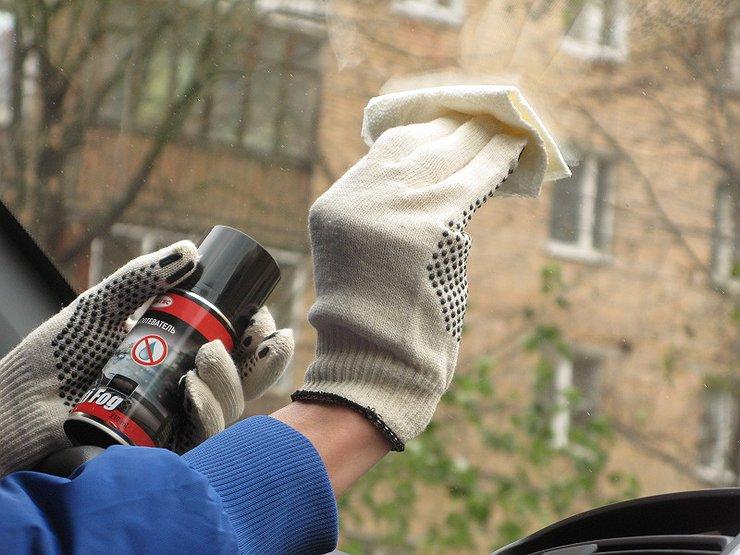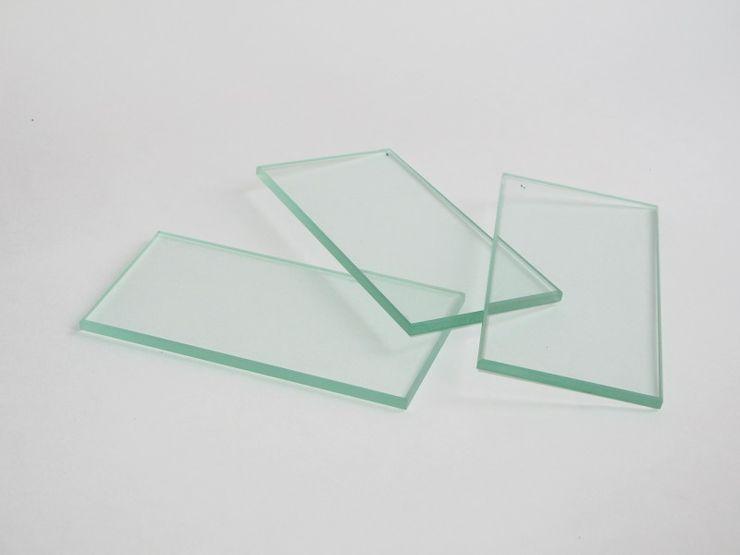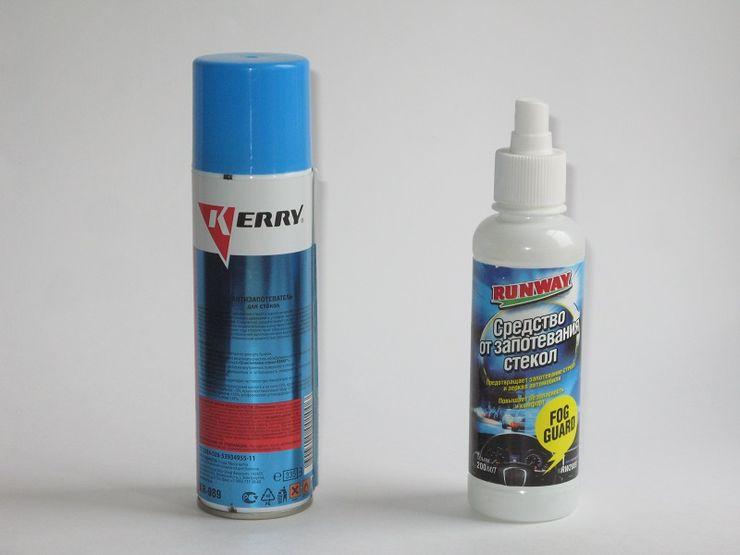
Coming out of the fog: how to prevent dangerous fogging of windows in the car
Moisture condensation or, more simply, fogging of the interior glass surfaces of the passenger compartment, motorists face almost every day. Most often this happens in the off-season and in winter, when it is cold outside. Meanwhile, misted glass is a direct road to emergencies. We found out how and with what you can easily and quickly solve the problem.
Our experts have tested in practice the effectiveness of several popular products designed to neutralize the condensate that forms on the inside of car windows. But before moving on to the productive part of the experiment, let's look at the nature of the question.
The car is much warmer, at least this is usually observed after a few minutes of warming up the engine. These temperature differences - lower outside and higher inside - become a kind of catalyst for the formation of condensate. It is clear that by itself it cannot come from anywhere - we also need the appropriate conditions, first of all - a certain concentration of water vapor, measured in milligrams per cubic meter of air. Moreover, for each value of this indicator, there is a so-called dew point, in other words, a certain critical temperature, a decrease to which leads to moisture falling out of the air, that is, condensate. The specificity of this process is such that the lower the humidity, the lower the dew point. How does this happen inside the car?

When you sit in the cabin, the air gradually warms up, its humidity rises from your presence. This process quickly "brings" the temperature of the glass, cooled by outside air, to the dew point of the air in the cabin. And this happens, as meteorologists say, at the border of contact, that is, where the warm “air front” meets the colder inner surface of the windshield. As a result, moisture appears on it. Obviously, from the point of view of physics, the appearance of condensate can be prevented in a timely manner if the difference in air temperatures outside and inside the machine is significantly reduced. So, by the way, many drivers do, including both air conditioning and hot air blowing on the windows when warming up the cabin (for this, by the way, there is a separate button on the climate control panel). But this is when there is a "condo". And when it is not there, you often have to open the windows and ventilate the interior, or temporarily turn off the stove and intensively blow the interior and windshield with cold outside air.

However, all these are trifles in comparison with the troubles that sudden fogging of the windshield can deliver directly while driving. As an example, let's cite one typical situation, which, we are sure, many motorists must have found themselves in, for example, in the capital region. Imagine: it's a little frost outside, about seven degrees, it's snowing lightly, visibility on the road is good. The car slowly moves in a traffic jam, the cabin is warm and comfortable. And along the way comes across a tunnel, where, as it turns out, the "climate" is somewhat different. Inside the tunnel, due to hot exhaust gases and running engines, the temperature has already exceeded zero and the snow stuck to the wheels melts quickly, so the asphalt is wet, and the air humidity is noticeably higher than “above”. The climate control system in the car sucks in part of this air mixture, thereby increasing the humidity of the already heated cabin air. As a result, when the car begins to drive out of the tunnel into the cold outside air zone, it is highly likely that a sharp fogging of the windshield should be expected, especially in situations where the defroster is turned off. A sudden deterioration in visibility is a high risk of getting into an accident.

Various methods are proposed as preventive measures to minimize the risk of such situations. One of the most common is the periodic (about once every 3-4 weeks) treatment of the inner surface of the interior glass with a special preparation, the so-called anti-fogging agent. The principle of operation of such a tool (its main component is a technical variety of alcohol) is based on enhancing the water-repellent properties of glass. If it is not processed, then the condensate on it falls in the form of thousands of tiny droplets, which causes the glass to “mist”.
But on a treated glass surface, especially an inclined one, the formation of drops is almost impossible. In this case, the condensate only moistens the glass, on which one can observe a transparent water film, although not uniform in density, but still. It, of course, introduces some optical distortions when viewed through wet glass, but visibility is much better than when it is fogged up.

It is not surprising that the demand for anti-foggers in our market remains stable, and on sale today you can find more than a dozen of these drugs produced by various manufacturers. We, for the comparative test, decided to limit ourselves to six products that were purchased at chain car dealerships and at gas stations. Almost all are made in Russia - these are Kerry aerosols (Moscow region) and Sintec (Obninsk), Runway sprays (St. Petersburg) and Sapfire (Moscow region), as well as ASTROhim liquid (Moscow). And only the sixth participant - the spray of the German brand SONAX - is made abroad. Note that at present there are no generally accepted or official methods for evaluating drugs in this category. Therefore, for their testing, our experts of the AvtoParad portal developed an original author's technique.

Its essence lies in the fact that calibrated glasses (of the same shape and size) are made for the test, one for each anti-fog sample. Each glass is treated with one test preparation, dried for a minute, then placed in a special way for a few seconds in a container with high air humidity at a temperature of about 30 degrees. After the appearance of condensate, the glass plate is fixed motionless in the holder and then through it, as through a colorless light filter, the control text is photographed. To complicate the experiment, this text was "typed" with clippings from ads, made in a variety of colors and different font heights.
To reduce the influence of the human factor when evaluating the received photos, our experts entrusted their analysis to a special program that recognizes text. When the glass is dry, it is completely transparent, so the captured control text is recognized without errors. If there are water film streaks on the glass or even the smallest droplets of water that introduce optical distortions, errors appear in the recognized text. And the fewer of them, the more effective the action of the anti-fogging agent. It is obvious that the program is no longer able to recognize at least part of the text photographed through foggy condensate (untreated) glass.
In addition, during the tests, the experts also made a visual comparison of the images obtained, which ultimately made it possible to get a more comprehensive idea of the effectiveness of each sample. Based on the data obtained, all six participants were divided into pairs, each of which took its place in the final ranking.

So, according to the method noted above, the German SONAX spray and the domestic ASTROhim liquid demonstrated the highest efficiency in condensate neutralization. The transparency of the glasses processed by them after moisture loss is such that the control text is easy to read visually and is recognized by the program with a minimum (no more than 10%) errors. Outcome - first place.

The samples that took second place, the Sintec aerosol and the Sapfir spray, also performed very well. Their use also made it possible to maintain sufficient transparency of the glasses after condensation. The control text can also be visually read through them, but the recognition program “evaluated” the effect of these anti-foggers more critically, giving out about 20% errors during recognition.

As for the outsiders of our test - Runwow spray and Kerry aerosol - their effect is noticeably weaker than that of the other four participants. This was fixed both visually and by the results of the text recognition program, in which more than 30% of errors were found. Nevertheless, a certain effect from the use of these two anti-foggers is still observed.

And in these photos you see the results of the control test of the test leaders, made through glass after condensation. In the first photo - glass pre-treated with ASTROhim; on the second - with Sintec; on the third - with Runway.




